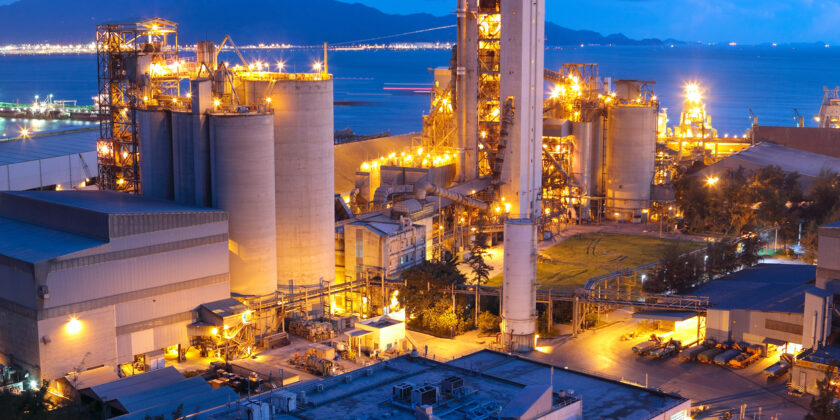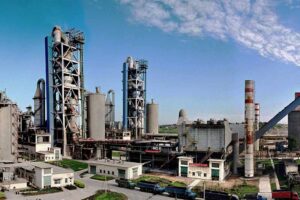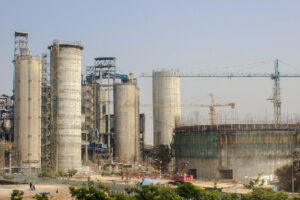Cement is one of the most essential materials in construction. Since ancient times, the strength, durability, and versatility of cement have made it a crucial component of building infrastructure worldwide. Cement plants play an indispensable role in transforming raw materials into the cement we rely on every day. But how exactly does this transformation happen? Let’s take a deep dive into the cement production process, from raw materials to the final product.
“Cement is the foundation of modern civilization, binding together everything from skyscrapers to sidewalks.”
What is a Cement Plant?
A cement plant is a specialized facility that manufactures cement from raw materials such as limestone, clay, and gypsum. There are two main types of cement plants:
- Integrated Plants: These facilities perform all steps of cement manufacturing, from raw material extraction to final product packaging.
- Grinding Plants: These plants focus on grinding clinker, a semi-finished product, to produce the final cement.
Raw Materials in Cement Production
To produce cement, three main raw materials are essential:
- Limestone: Provides calcium carbonate, a key component in the clinker formation.
- Clay: Contributes silica, alumina, and iron oxide, which aid in the cement’s strength.
- Gypsum: Controls the setting time of cement, allowing it to harden gradually.
Cement Manufacturing Process
The cement production process can be broken down into six major stages, each contributing to the creation of a high-quality product.
- Step 1- Raw Material Extraction: Cement production begins with the extraction of raw materials, usually from quarries located near the plant. Limestone, clay, and other additives are mined and transported to the processing area. Environmental considerations are crucial here, as quarrying can impact local ecosystems.
- Step 2- Raw Material Preparation: After extraction, raw materials undergo crushing and grinding to achieve the required particle size. The size and uniformity of particles are critical to ensure consistent chemical reactions in later stages, affecting cement quality.
- Step 3- Preheating & Proclaiming: In this stage, the raw meal is heated in a preheated tower to around 800°C. Preheating and pre-calcining help remove moisture and partially decompose carbonates, making the subsequent kiln stage more efficient.
- Step 4- Clinker Production in the Kiln: The heart of a cement plant is the rotary kiln, a large cylindrical furnace where raw materials are heated to 1450°C. At this temperature, chemical reactions occur, forming a new substance called clinker. The kiln’s rotation helps mix the materials uniformly, ensuring consistent quality.
“The rotary kiln is the workhorse of the cement plant, where raw ingredients transform under intense heat into the vital building block of construction.” — Kiln Specialist.
- Step 5- Clinker Cooling: After exiting the kiln, clinker must be cooled quickly to prevent undesired reactions. Cement plants typically use air coolers or water-sprayed coolers to reduce clinker temperature, preserving quality while also recovering heat for reuse in the process.
- Step 6- Cement Grinding: The cooled clinker is ground into a fine powder with gypsum and sometimes additional materials like limestone. The grinding process is highly energy-intensive, involving mills that reduce clinker to the fine consistency required for high-strength cement.
Cement Packaging & Distribution
Once ground, cement is stored in silos before being packed and distributed. Packaging can be done in bags or as bulk shipments, depending on the target market and distribution channels.
Key Equipment in Cement Plants
Cement plants are equipped with various machinery, including:
- Crushers & Grinders: Used for crushing and grinding raw materials.
- Rotary Kilns: Essential for clinker production.
- Coolers & Air Separators: Help maintain product quality. Regular maintenance of these machines is critical to ensure efficient production.
Sustainable Practices in Cement Production
Cement manufacturing is energy-intensive and generates significant CO2 emissions. To address these challenges, many cement plants adopt sustainable practices:
- Alternative Fuels & Raw Materials: Plants now use waste-derived fuels and secondary raw materials to reduce dependence on natural resources.
- CO2 Emission Reduction: Technologies like carbon capture and storage (CCS) and the use of renewable energy sources help reduce the carbon footprint of cement production.
Future of Cement Plants
The cement industry is witnessing technological transformations with advancements in automation, AI, and sustainable manufacturing. Smart sensors, automated monitoring, and predictive maintenance allow for optimized energy use and efficiency. AI-driven systems are now helping cement plants adjust process variables in real-time, enhancing both productivity and sustainability.
Conclusion
Cement plants are at the core of construction and infrastructure development. From raw material extraction to the finely tuned grinding processes, every step in a cement plant is crucial for producing a reliable and high-strength product. By investing in innovation and sustainability, the cement industry continues to meet growing demands while reducing its environmental impact.




